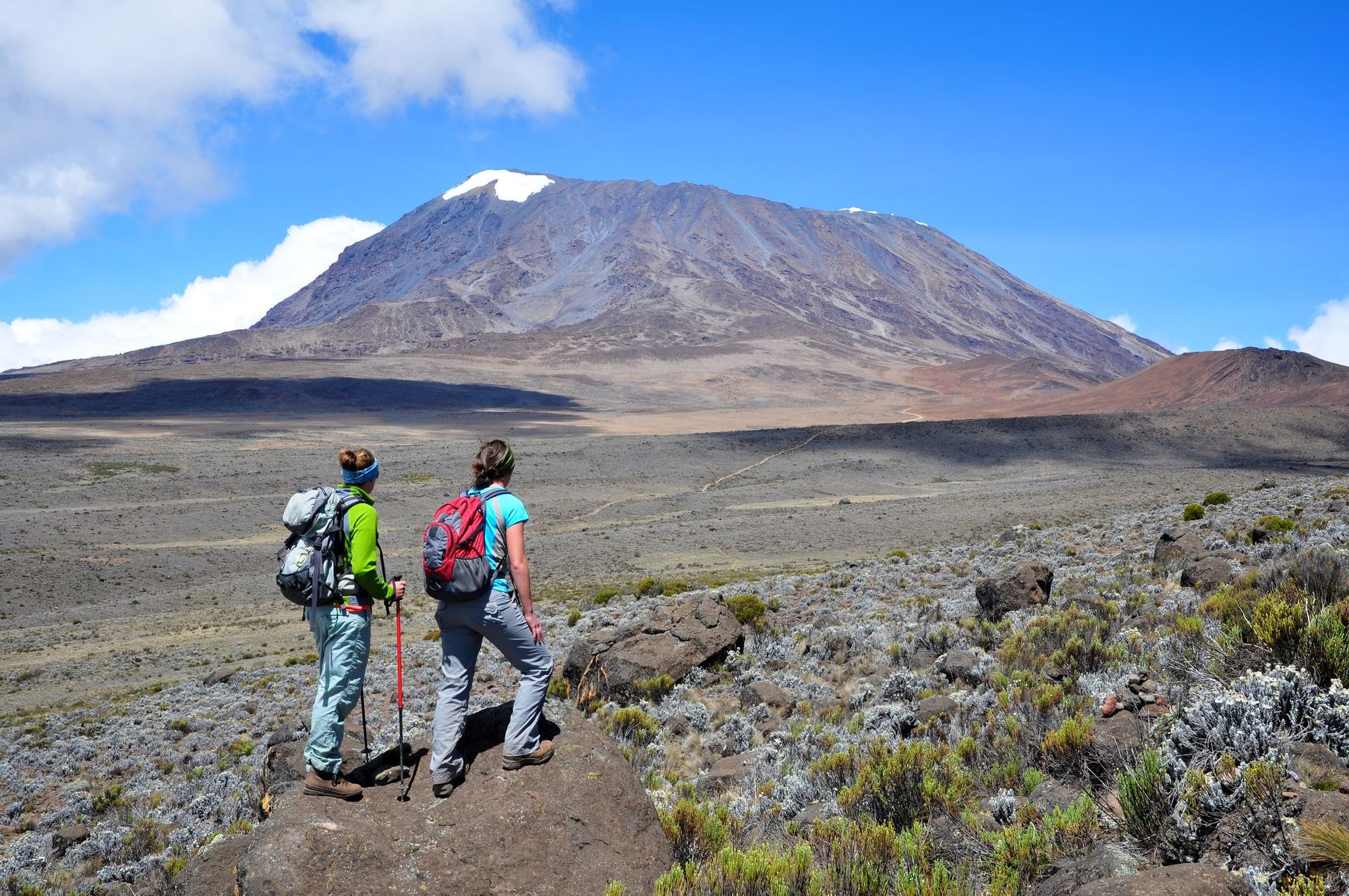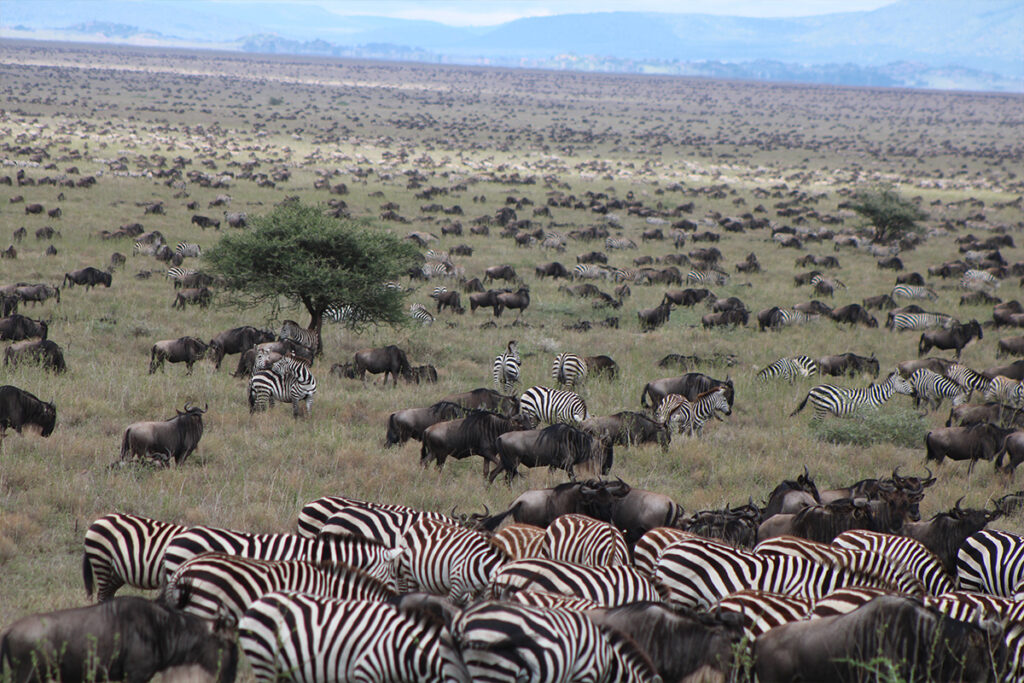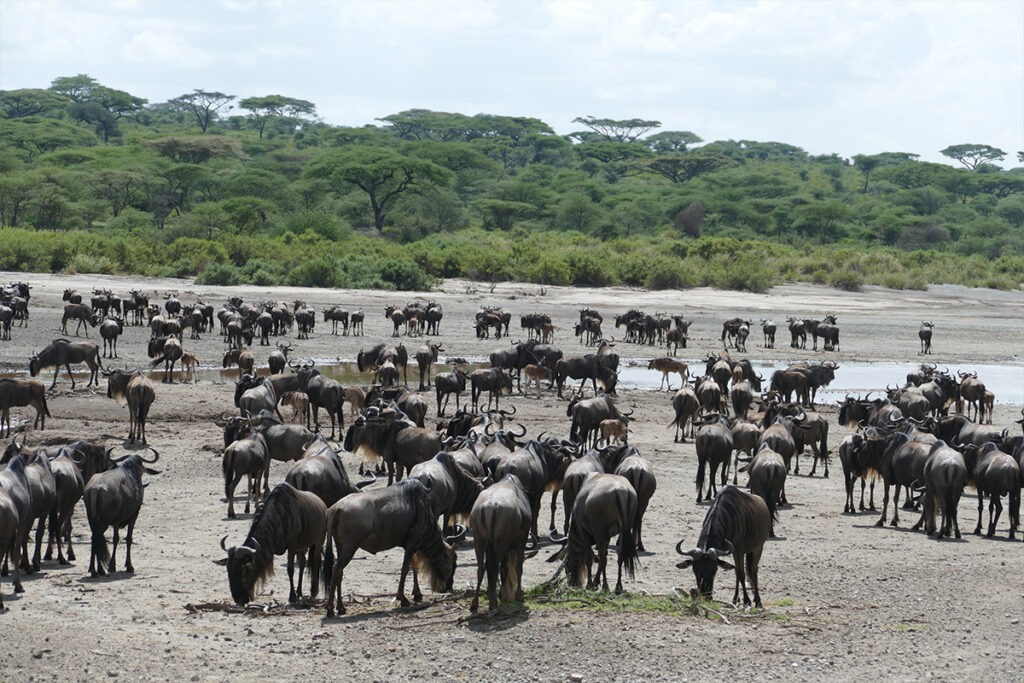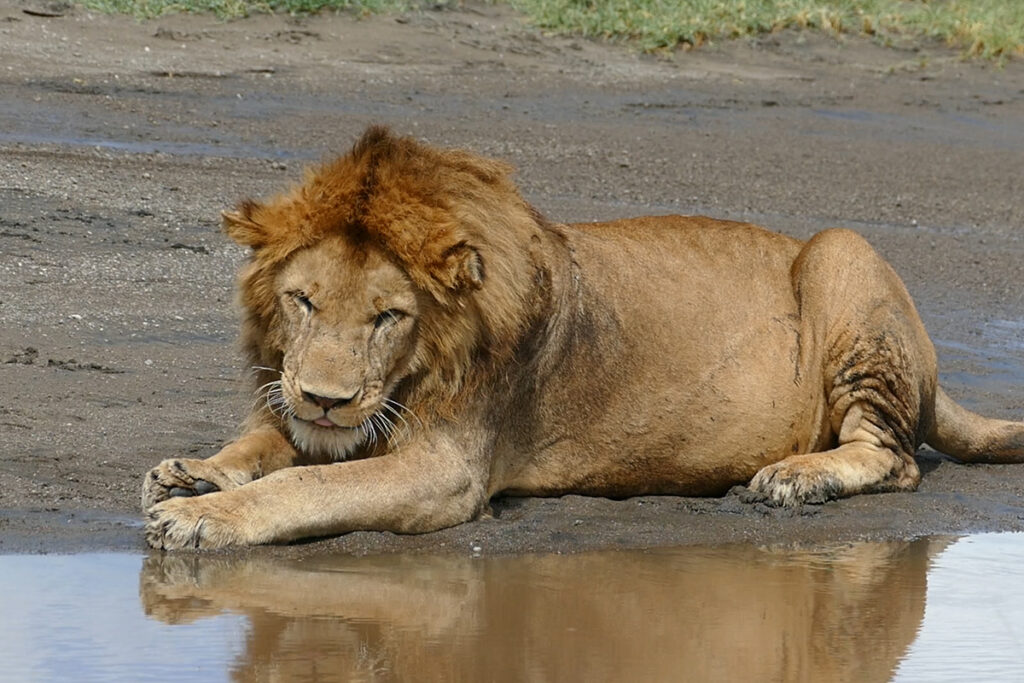Standing at 19,341 feet, Kilimanjaro is not just Africa’s highest peak, but one of the world’s most iconic climbs. Each year, roughly 30,000 adventurers seek to conquer its slopes. However, many are taken by surprise at the rapid change in climate as they ascend from lush rainforest to icy summit.
Climbing Kilimanjaro isn’t merely a physical challenge; it’s a journey through five distinct ecological zones. Historically, successful summit attempts rest at about 65%, often influenced by altitude acclimatization practices. With proper preparation and guided support, reaching the “Roof of Africa” becomes an achievable dream for seasoned climbers.
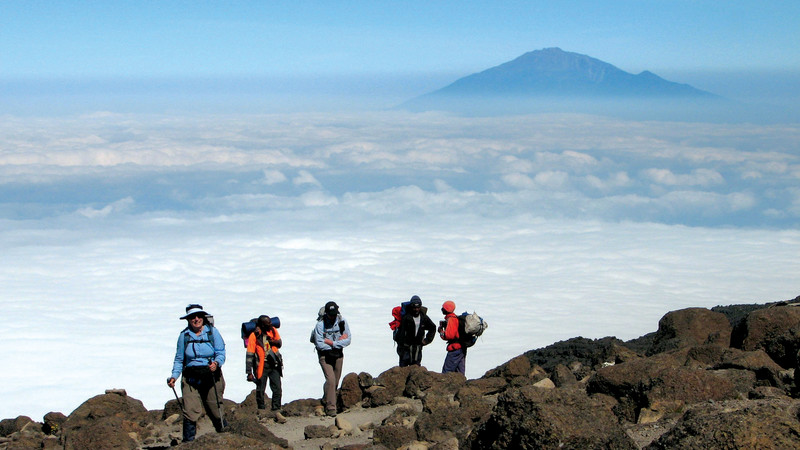
What to Expect: Climbing Kilimanjaro Experience
Climbing Kilimanjaro is a journey that starts in a rainforest. You’ll see lush greenery and exotic birds as you begin your ascent. The trails wind through dense vegetation, and the air is thick with the sounds of nature. As you climb higher, the rainforest gives way to heath and moorland. Here, the views open up, and the terrain becomes rockier.
The next challenge is the alpine desert, where temperatures drop, and the landscape is stark. This zone is marked by volcanic rock and sparse vegetation. It’s a place where the wind can be biting, and the UV rays harsh. Climbers need to be well-prepared for these conditions. Adequate clothing and gear are essential.
Above the alpine desert is the arctic zone, the final stretch before the summit. At this altitude, oxygen levels are significantly lower. Climbers often experience altitude sickness here, and the pace slows. It’s crucial to stay hydrated and listen to your body. The summit night involves a tough, slow climb in the dark, often starting at midnight.
Reaching the summit of Kilimanjaro is an unforgettable achievement. You’ve endured various climates, from tropic to arctic, all in one climb. The view from the top is breathtaking, with glaciers and the African plains stretching out below. For many, it’s a lifechanging moment. Successful climbers often find a new level of personal resilience and strength.
Climbing Kilimanjaro | 9 THINGS You Need To Know
Preparation Strategies for the Climb
Preparing for Kilimanjaro starts with physical training. Focus on cardio workouts like running and cycling to build endurance. Strengthen your legs with hikes and squats. Incorporating stair climbing can simulate the trek’s demands. Ensure your training is consistent for at least three months before your climb.
Acclimatization is crucial for handling high altitudes. Plan to spend extra days trekking to allow your body to adjust. Consider practicing on smaller mountains before attempting Kilimanjaro. Altitude sickness can affect anyone, regardless of fitness level. Listening to your body and knowing the symptoms are vital.
Pack smartly to ensure your comfort and safety on the mountain. Essential gear includes waterproof clothing, thermal layers, and sturdy trekking boots. Don’t forget a headlamp for the summit night’s dark climb. Your backpack should also contain snacks, water, and sunscreen. A comprehensive list will keep you well-prepared.
Hydration and nutrition are key during the climb. Drink at least three liters of water daily to remain hydrated. Bring along high-energy snacks like nuts, energy bars, and dried fruit. Meals on the mountain are typically provided by the trekking company. A balanced diet helps maintain energy levels and reduces fatigue.
Understanding the Altitude and Its Impacts
Altitude plays a significant role in your Kilimanjaro experience. As you climb higher, the air gets thinner, reducing the oxygen available. This can lead to altitude sickness, affecting your performance and health. Symptoms can include headache, dizziness, and nausea. Recognizing these signs early is crucial.
Altitude sickness doesn’t discriminate; anyone can be affected. There are ways to minimize the risks, such as ascending slowly and taking acclimatization breaks. Drinking plenty of water helps combat dehydration caused by the dry air. Your body needs time to produce more red blood cells. This process aids oxygen transport and improves endurance.
It’s also helpful to take medications that prevent altitude sickness. Common options include Acetazolamide, often known as Diamox. Consult with your doctor before the climb to understand the dosage and potential side effects. Medications can reduce symptoms but won’t eliminate them entirely. They are most effective when combined with other preventative measures.
Tracking your altitude and health is vital. Many climbers use a pulse oximeter to monitor oxygen levels in their blood. These tools can alert you to potential problems early. Keeping a log of your altitude, daily symptoms, and remedies taken can be valuable. This record can help you and your guide make informed decisions during the climb.
Navigating Through the Five Climatic Zones of Kilimanjaro
The journey begins in the lush rainforest zone. Here, towering trees and thick underbrush create a vibrant, green canopy. The air is rich with the scent of earth and a chorus of birdsong accompanies your steps. Moisture is prevalent, making waterproof gear essential. This zone also hosts diverse wildlife like monkeys and exotic birds.
Next, the trail leads into the heath and moorland zone. Vegetation becomes sparser, with shrubs and grasses dominating the landscape. The climate is cooler, and expansive views begin to unfold. The Heathers, draped with moss, create otherworldly scenery. This zone often surprises climbers with its cool, misty ambiance.
Continuing upwards, you enter the alpine desert zone. The landscape starkly contrasts with what you’ve traversed before; it’s rocky with vast stretches of volcanic ash and scree. Temperatures vary sharply between day and night here. Water sources are scarce, so carrying enough water is critical. Few plants survive in this harsh environment.
The penultimate stage is the arctic zone, near the summit. Here, the world is icy and devoid of vegetation. Strong winds whip across ice fields and glaciers. It’s a silent, cold world where breathing becomes more challenging due to the thin air. Layers of warm clothing are a must to combat frigid temperatures.
Finally, reaching the summit is the ultimate reward. Known as Uhuru Peak, it stands at 19,341 feet. The views stretch across the African plains, offering a breathtaking panorama. It’s a triumph over diverse terrains and challenging conditions. This achievement is etched into every climber’s memory, a testament to perseverance and strength.
Essential Gear and Equipment List
Climbing Kilimanjaro requires specific gear to ensure safety and comfort. Proper clothing is essential for the varying climates you’ll encounter. Pack thermal layers, waterproof jackets, and windproof trousers. High-quality trekking boots are a must to navigate the rocky terrain. Gaiters can keep debris from entering your footwear.
Your backpack should contain key items for the trek. Bring a sturdy, weather-resistant backpack. A well-stocked first aid kit with medication is vital. Include a headlamp for nighttime visibility. Don’t forget a durable water bottle or hydration pack.
Protecting yourself from the sun and cold is crucial. Pack a wide-brimmed hat, sunglasses, and high-SPF sunscreen. Lip balm with sun protection prevents chapping. Warm gloves and a beanie are necessary for high altitudes. A good sleeping bag designed for cold weather is indispensable.
Technical equipment enhances the climb’s success. Consider trekking poles for stability. A multi-tool can be handy for various tasks. Carry a lightweight, quick-dry towel. Personal hygiene items, including biodegradable soap, are also essential. Remember, lighter gear means easier trekking.
- Thermal layers and waterproof clothing
- High-quality trekking boots and gaiters
- Sturdy backpack and first aid kit
- Headlamp and water bottle
- Sun protection and warm gloves
- Sleeping bag suitable for cold weather
- Trekking poles and multi-tool
- Quick-dry towel and personal hygiene items
Physical and Mental Challenges Encountered
Tackling Kilimanjaro is not just a test of physical strength; it’s also a mental battle. The days are long, often requiring eight hours of trekking. Fatigue sets in as both your body and mind face the relentless climb. The initial excitement may give way to exhaustion, and keeping motivated is a real challenge. Staying positive and focused helps overcome these trials.
The altitude adds a layer of complexity to the physical demands. Breathing turns into a conscious effort, and simple tasks become exhausting. Many experience symptoms of altitude sickness, such as dizziness and headaches. Noticing these symptoms early can prevent more severe issues. Guides often remind climbers to “walk slowly” to conserve energy and adjust to the thin air.
Mentally, the mountain can feel overwhelming with its vastness and unpredictable weather. When your legs feel like they can’t move another step, mental resilience becomes crucial. Encourage yourself to take one step at a time, focusing on small goals. It’s important to remind yourself why you started this journey. Team support can boost morale and keep spirits high.
While the climb is demanding, it offers chances for personal growth. Overcoming each challenge builds confidence and fosters a sense of accomplishment. Climbers often find strengths they never knew they had. The experience also teaches patience and perseverance. These lessons learned on the mountain can be valuable in everyday life.
Wildlife and Scenery on Kilimanjaro
Kilimanjaro is not just about the climb; it’s also a treasure trove of wildlife. In the lush rainforest zone, you’ll see blue monkeys and colobus monkeys leaping through the trees. Birdwatchers will be thrilled with colorful species like the turaco and hornbill. The diversity of creatures adds to the magical feel of the forest. Keep your eyes peeled for these fascinating animals.
The scenery changes dramatically as you move upwards. The heath and moorland zone features striking plants like giant groundsels and Lobelias. These unique species have adapted to the high-altitude conditions. You may also spot eland antelope grazing in this region. The changing landscape keeps every step interesting.
Higher up, in the alpine desert, vegetation becomes sparse but still remarkable. Hardy plants like lichens and mosses thrive here against all odds. The rocky terrain provides dramatic views over vast expanses of volcanic rock. Occasionally, you might see small animals such as rock hyraxes darting among the rocks. This minimalist beauty has its own unique appeal.
At the peak’s arctic zone, life is scarce yet awe-inspiring ice fields and glaciers make up for it. The icy landscape glistens under sunlight, providing breathtaking scenes worthy of photographs. Here, it’s about appreciating nature’s raw power rather than animal life. This final stretch showcases a stark but captivating contrast to lower regions.
Cultural Interactions and Local Traditions
Climbing Kilimanjaro offers a unique opportunity to engage with the local culture. The journey typically begins in Moshi, where you’ll meet the Chagga people. These locals are known for their warm hospitality and rich traditions. As you explore the region, you’ll get to experience their vibrant markets and tasty cuisine. Sharing a meal is a wonderful way to connect and learn.
Guides and porters are invaluable companions on the mountain. They are often from local communities and have profound knowledge of the terrain. Their songs and stories can lift your spirits and provide motivation. Many climbers enjoy learning Swahili phrases to communicate with their guides. This simple effort is appreciated and strengthens camaraderie.
Traditional ceremonies play a prominent role in Tanzanian culture. Before the climb, many groups perform the “Jambo” song as a welcoming tradition. This uplifting music sets a positive tone for the adventure ahead. Engaging in these cultural norms is part of respecting and honoring local customs. It’s a shared experience that adds depth to the climb.
After the climb, some travelers visit local villages to explore further. Experiences might include visiting coffee plantations or participating in folk dances. Interacting with residents offers insights into their daily life and history. Such visits highlight the resilience and creativity of local communities. They also support sustainable tourism by giving back to the community.
Post-Climb Recovery and Reflections
After conquering Kilimanjaro, your body will need some time to recover. Expect muscle soreness and fatigue from the demanding trek. Hydration and nutrition are crucial in aiding recovery. Replenishing lost fluids and salts can help you feel better quickly. Plenty of rest will also speed up the healing process.
Reflecting on the climb can be a powerful experience. Many climbers feel a profound sense of accomplishment. Reaching the summit is more than a physical challenge; it’s a personal journey. Taking time to write about your experiences can help preserve these memories. Sharing your story might even inspire others to embark on their own adventures.
The friendships formed during the climb often lead to lasting connections. Climbers share unique challenges and triumphs, bonding over these shared experiences. Many keep in touch long after returning home. Reuniting for future adventures isn’t uncommon. These relationships are valuable takeaways from the trek.
For those who’ve reached the summit, reflecting on the bigger picture can be enlightening. The climb often changes perspectives and brings new appreciation for nature and personal resilience. It can be a motivational turning point in life. Some use their newfound drive to take on other challenges. This journey can leave a lasting impact on your outlook.
Finally, reviewing what you’ve learned is a great way to grow. Reflect on what strategies worked and what could be improved. This self-assessment is invaluable for personal development. The lessons from Kilimanjaro extend far beyond the mountain itself. Applying them in everyday life enhances both personal and professional growth.
Key Takeaways
- Kilimanjaro has diverse zones from rainforest to arctic.
- Climbers face physical and mental challenges.
- Altitude impacts breathing and stamina on the climb.
- Interacting with local guides enriches the experience.
- The summit offers breathtaking, unforgettable views.
